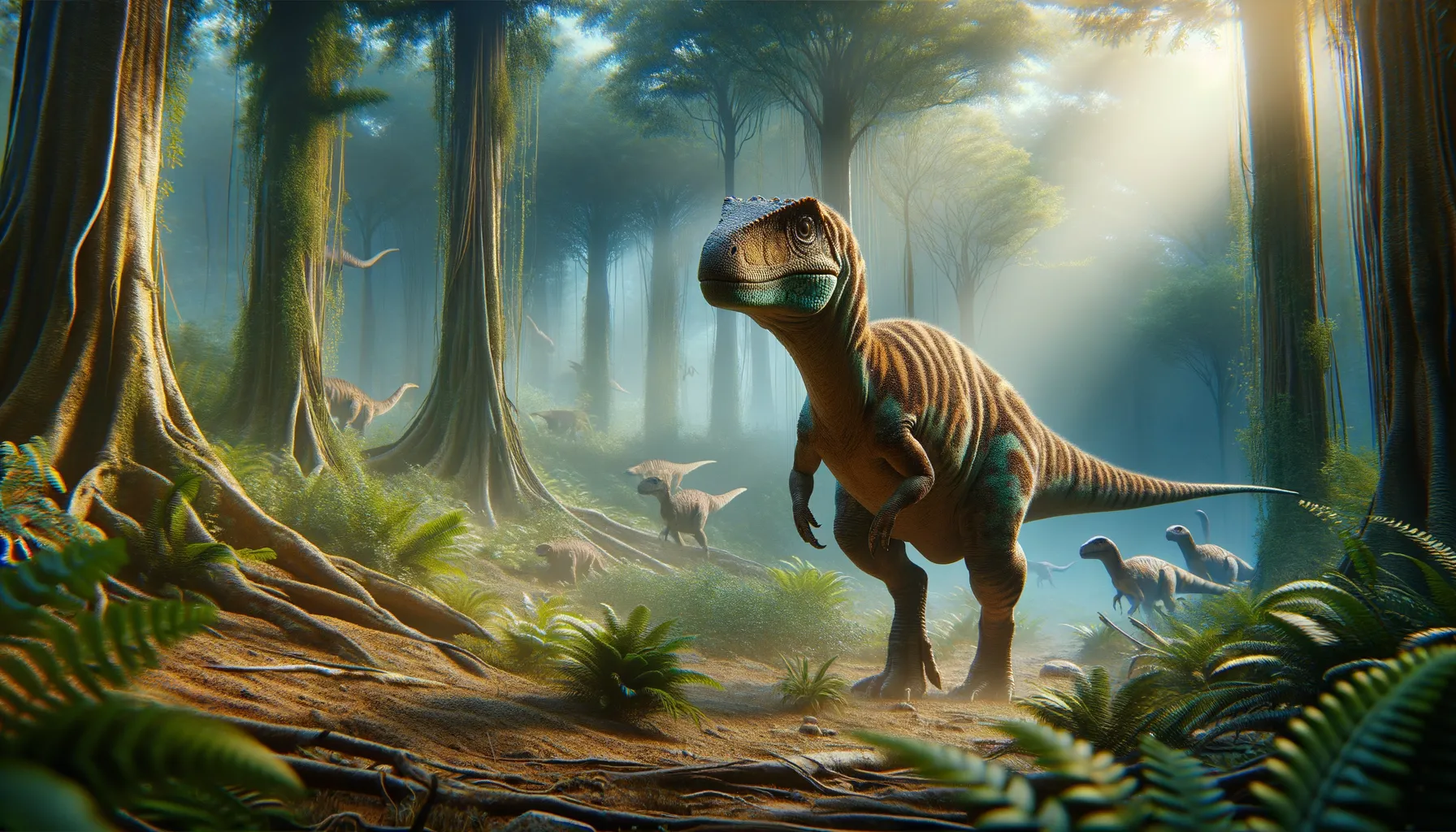
Centemodon
An early pioneer of the Triassic landscape!
Period
Triassic
Length
Estimated to be a few meters long.
Height
Estimated at a few feet tall.
Weight
Exact weight remains uncertain.
Centemodon is a genus within reptilian history primarily known from limited fossil remains. It is believed to belong to the early group of small, bipedal reptiles that thrived during the Late Triassic period. Fossil evidence indicates it lived among dense vegetation, co-existing with other prehistoric creatures. Though detailed knowledge about its ecology and behavior remains speculative, Centemodon represents an early chapter in the evolution of vertebrate life on land.
Diet
Centemodon is presumed to have been a herbivore, feeding on low-lying plants. Its jaw structure suggests it could handle fibrous plant materials found in its environment.
Hunting
As a herbivore, Centemodon did not hunt other animals. It likely foraged for food, moving through its habitat in search of edible plants.
Environmental challenges
During the Triassic period, the Earth experienced dramatic climate changes, leading to varying ecosystems where Centemodon lived. It faced competition from other herbivores for limited food resources. Occasional dry spells could have affected plant availability, challenging its survival.
Speed
Details unknown due to limited fossil evidence.
Lifespan
Specific lifespan details remain unknown.
First discovery
Discovered during early expeditions in New Jersey.
Fun Facts
- Centemodon was a dinosaur that lived during the Late Triassic period, which was over 200 million years ago.
- It was a small dinosaur, roughly the size of a chicken, making it interestingly petite compared to its larger dinosaur relatives.
- Centemodon is believed to have been a herbivore, feeding on plants and leaves in its environment.
- The first fossils of Centemodon were discovered in North America, specifically in the state of Pennsylvania.
- Despite its small stature, Centemodon had a long tail, which might have helped it maintain balance and agility.
- Centemodon's name means 'pointed tooth', reflecting the sharp teeth that some paleontologists believe it might have had.
- Fossils of Centemodon are rare, making it a less well-known dinosaur compared to its more famous contemporaries.
Growth and Development
Without direct fossil evidence, Centemodon's growth patterns are mostly hypothesis-driven. Like many reptiles, it likely hatched from eggs and grew relatively quickly, reaching maturity to reproduce efficiently. Its development would have been influenced by environmental factors and resource availability.
Habitat
Centemodon inhabited wooded regions, rich in ferns and cycads. The landscape was likely diverse, providing cover from predators. These environments ranged from lush floodplains to drier upland areas, offering a variety of plant life for sustenance.
Interaction with other species
Living alongside a range of other reptiles and early dinosaurs, Centemodon co-existed in complex ecosystems. It likely avoided larger predators, relying on its agility for survival. Interaction with other herbivores could have involved competition for space and resources.
Natural lifespan
The natural lifespan is not definitively known due to limited data.
Reproduction
Centemodon's reproductive strategies likely involved laying eggs in concealed nests. Fossil evidence of similar species suggests that parental care may have been minimal, with hatchlings being relatively independent soon after birth.
Social behaviour
Centemodon's social behavior likely centered around small-group living or solitary existence. During mating seasons, temporary pairs or gatherings might have occurred. Social interactions would have been limited, with more focus on survival and reproduction.
Fossil locations
Fossils attributed to Centemodon have predominantly been found in North America, notably New Jersey. These findings are crucial in reconstructing the early Triassic era's ecosystem dynamics and understanding the distribution of early reptilian life.
